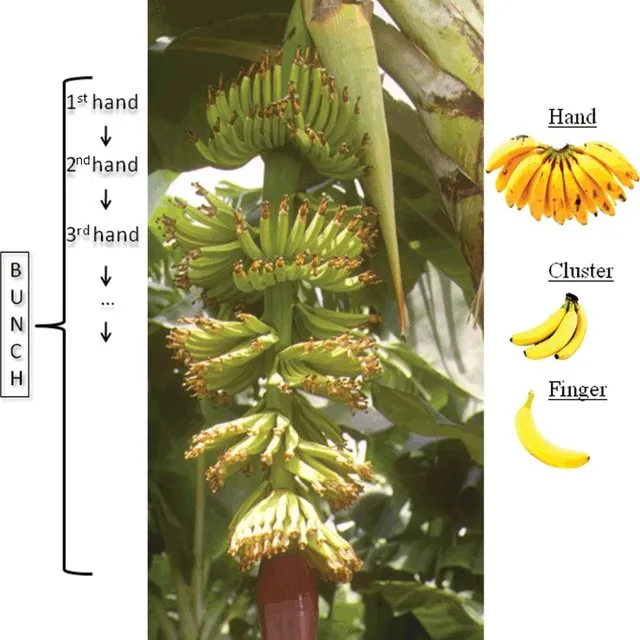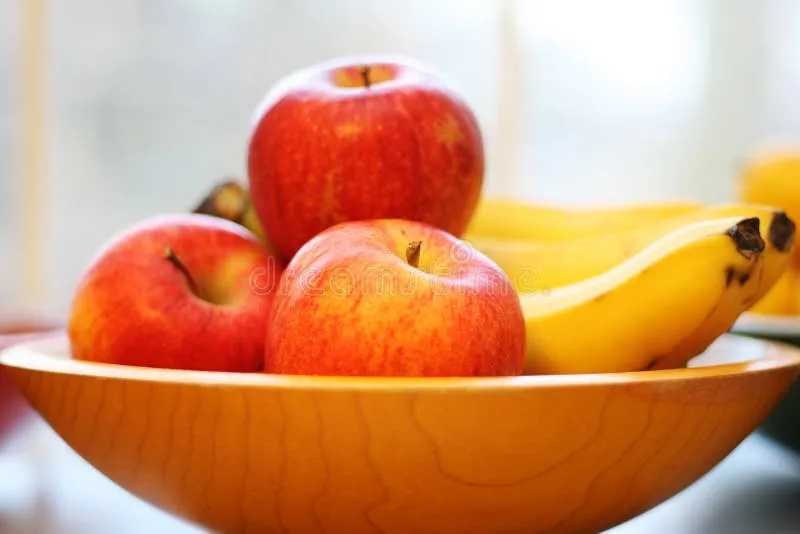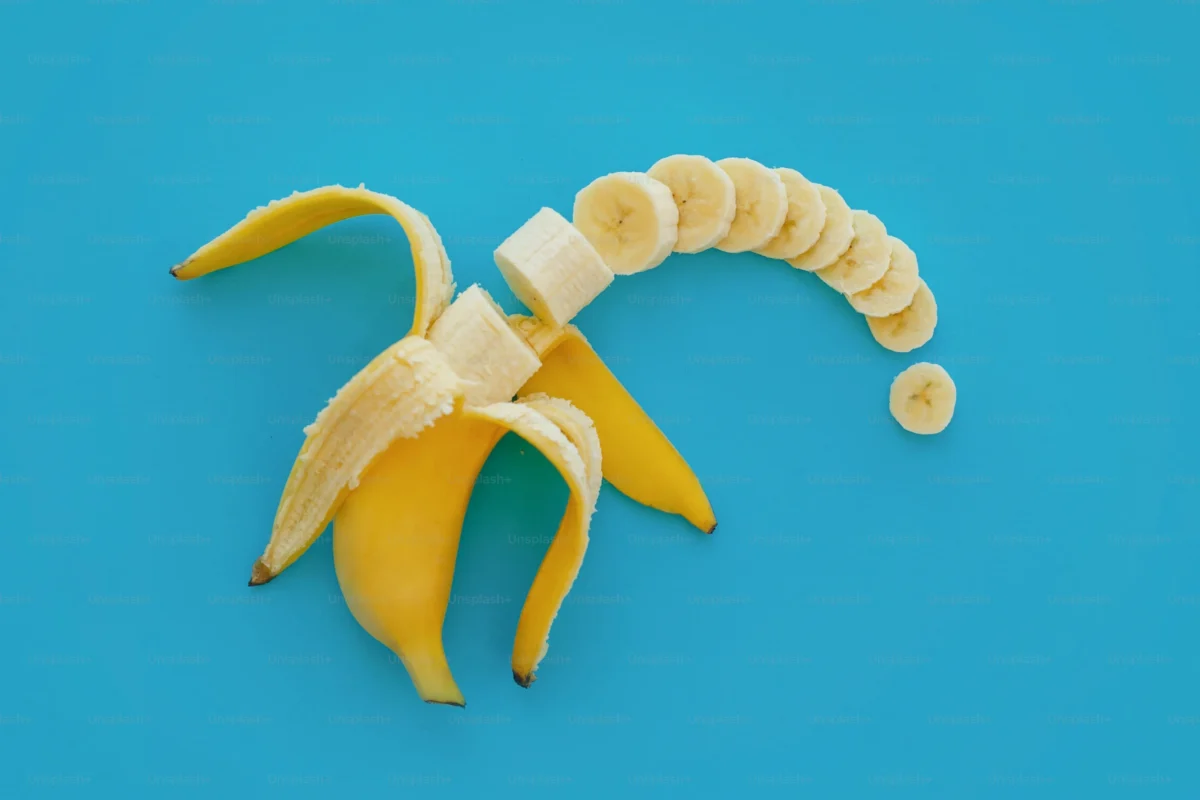The Anatomy of a Banana Bunch: Exploring the Different Parts of Your Favorite Fruit
Are you a fan of bananas but curious about the mystery surrounding the different parts of a banana bunch? Look no further as we dive into the anatomy of the beloved fruit!

We’ll start with an introduction to the banana bunch and its various parts. The stem plays a crucial role in supporting the weight of the entire bunch, while the hands, or tiers, hold each individual banana in place. But did you know that the number of hands on a banana bunch can vary depending on the type of banana?
And let’s not forget about the crown, or top, of the bunch, which is not just for visual appeal but also an important indicator of the fruit’s ripeness. Understanding the different parts of a banana bunch can give you insight into the fruit’s growth and development, and provide clues to when the bananas are ready to be harvested.
So, for all your banana enthusiasts out there, keep reading to learn more about the fascinating world of bananas and their various parts.
An Introduction to the Banana Bunch and Its Parts.
Bananas are a versatile fruit that can be enjoyed in many ways. But have you ever stopped to consider the different parts of a banana bunch and their unique characteristics? Let’s take a closer look.
The first part of the banana bunch is the stem, also known as the peduncle. This strong and fibrous structure supports the weight of the entire bunch and connects it to the main trunk of the banana plant.
Next, we have the central axis, or rachis, which runs through the center of each individual fruit within the bunch. This axis gives structure to each fruit and helps distribute nutrients throughout.
Each individual fruit within a banana bunch is known as a finger or subunit. These fingers are arranged in rows along either side of the central axis and vary in size from small to large depending on their position within the bunch.
Finally, we have what is commonly referred to as “the crown” – this is made up of several layers of protective leaves that surround and cover both ends of the entire banana bunch.
Understanding these different parts can not only help you appreciate bananas more fully but may also come in handy when growing or harvesting your own fruits!
The stem of the banana bunch supports the bananas.
Have you ever wondered how a bunch of bananas stays together without falling apart? It’s all thanks to the stem that connects them. This seemingly small and insignificant part of the banana is actually essential to its structure and support.
The stem, also known as the peduncle, is located at the top of the banana bunch and connects each individual fruit to the main stalk. It acts as a conduit for nutrients and water, ensuring that each banana receives what it needs to grow properly.
But beyond its functional role, the stem also plays a crucial role in protecting the bananas from damage. As they grow and ripen, their weight can cause them to tilt or even break off from their attachment point. However, because of the sturdy nature of the stem, this rarely happens.

Interestingly enough, not all banana stems are created equal. Some varieties have thicker stems than others, which can affect how many bananas can be supported on one bunch. Additionally, some growers will trim away excess stems or even leave extra-long ones for aesthetic purposes.
In conclusion, while it may seem like just a small piece of a larger picture when it comes to bananas – don’t underestimate its importance! The stem is an integral part in keeping these tasty fruits safe and secure until they reach your grocery store shelves (and eventually your kitchen counter).
The hands or tiers–how they hold the individual bananas and their significance.
When it comes to the world of bananas, there is more than meets the eye. A seemingly insignificant aspect of this fruit is the way in which its hands or tiers hold each individual banana. However, this small detail actually plays a significant role in determining the quality and value of the fruit.
The hands, or tiers, refer to the clusters of bananas that grow together on a single stem. Each hand can contain anywhere from 3 to 20 individual bananas, depending on the variety. The way in which these bananas are held within each hand can greatly impact their overall quality.
For example, if a banana hand holds its fruit too tightly or too loosely, it can cause damage to individual bananas during transportation and storage. This can lead to bruising and other imperfections that reduce their market value.
Furthermore, different types of banana hands have varying levels of significance within different cultures and traditions around the world. In some cultures, a six-handed banana cluster is considered lucky while others believe that uneven numbers bring bad luck.

« can banana and milk make you fat
what should banana bread mixture look like »
Understanding these nuances about how bananas are held within their clusters may seem trivial at first glance but it can have real-world implications for those involved in growing and selling them.
So next time you bite into a perfectly ripe banana consider how its placement within its hand played an important role in getting it from farm to table.
The crown, or top, of the banana bunch–what is it and what is its importance?
Have you ever wondered about that mysterious crown or top of the banana bunch? It may seem like just another part of the fruit, but it actually plays a crucial role in the banana’s growth and development.
The crown is made up of tightly packed leaves that protect the delicate flowers and fruit as they develop. Without this protective layer, bananas would be vulnerable to damage from insects, weather, and other external factors.
But the crown’s importance doesn’t end there. It also serves as a source of nutrients for the developing fruit. As the bananas grow, they draw nourishment from the stem and leaves of the plant via a complex system of veins.
In fact, some experts believe that removing the crown too early can actually stunt the growth and development of bananas. This is because it disrupts their supply of vital nutrients at a critical stage in their growth cycle.
So next time you’re enjoying a delicious banana, take a moment to appreciate its humble crown. Without this unassuming little cluster of leaves, we might not have access to one of our favorite fruits!
Conclusion and summary of the different parts of a banana bunch.
In conclusion, a banana bunch consists of various parts that serve different purposes. The stem or peduncle connects the bunch to the main plant and provides support for the fruit. The bracts are protective coverings that surround the fruits and protect them from damage.
The hands or clusters are made up of several tiers of individual bananas, each connected by a stem called a rachis. Each tier is known as a row or tier, and each banana within it is referred to as a finger.

The size and shape of the bunch can vary depending on factors such as plant variety, climate conditions, and cultivation practices.
It’s important to note that not all bananas grow in bunches; some varieties produce single fruits instead. Additionally, not all parts of the banana bunch are edible – only the individual bananas themselves can be eaten.
Overall, understanding the different parts of a banana bunch can deepen your appreciation for this delicious fruit and help you make more informed choices when selecting and consuming them.
Check out our other articles to find out even more about banana.
We’ve now discussed the anatomical parts of a banana bunch and what they contribute to this unique fruit. From the stem to the crown, each part is essential in making sure your bananas arrive safe and sound on your plate! If you’d like to learn even more about bananas, be sure to check out our other articles.
















